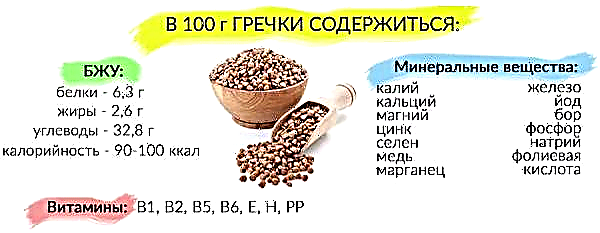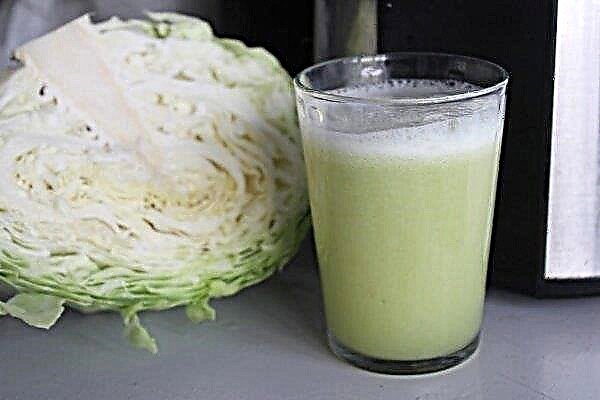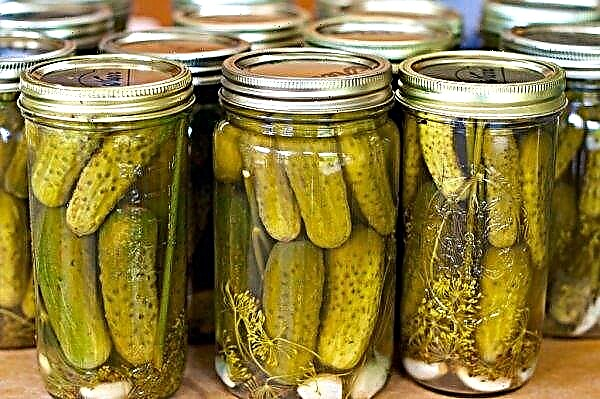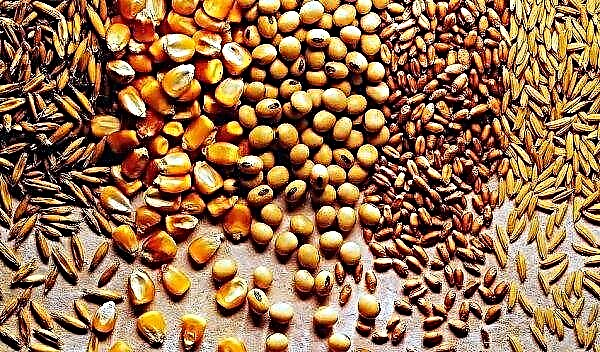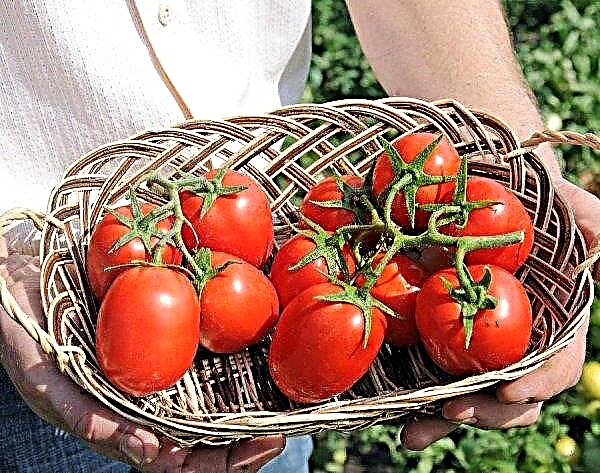The pool has always been considered the highlight of the suburban area, so it is not surprising that when ennoblement of the local area, many summer residents or owners of large mansions seek to allocate a place for this structure.
Their choice today is so great that to find out which option to purchase is very difficult, not to mention the additional design of an artificial reservoir. At the same time, it is still possible to achieve the maximum decorativeness of the site with it, you only need to take into account some characteristics of the product and methods of its design.
Types of pools
On the modern market there are a variety of design and functional models of poolsStarting from more budgetary inflatable or plastic and ending with frame or stationary, during the installation of which it is often necessary to develop a whole project, attract experienced builders. To decide for yourself which version of such a reservoir is best for the site, you need to familiarize yourself with all the characteristics of such products in advance.
Did you know? The largest swimming pool in the world is deservedly considered a kilometer-long artificial structure along the ocean in the resort of Algarrobo, located in Chile. Its area is about 8 hectares, so you can see the reservoir even in satellite images.
Inflatable
Despite the relative strength of the material of manufacture, quality inflatable pools deserved considered one of the most common budget types. It can be placed in any place convenient for this and, if necessary, quickly disassemble.

Water is drained through a special hole on the body, and to pump the product up again, you just need to use a pump. It is the inflatable models that are considered the optimal solution for installation in a small summer cottage, especially since there is the possibility of choosing a specific shape, size and even color design for all family members.
Frame (prefabricated)
This species is considered more durable compared to the inflatable one, since it cannot be pierced and its service life is much higher. The basis of this design is a solid, waterproofing coating, as well as strong side supports. Despite the presence of many details, it is not difficult to install the product, because how to assemble the pool, you can guess intuitively.

Of course, taking into account all the positive qualities of the prefabricated version, its cost will be justifiably higher than that of the previous one, but to get a durable product, it is worth spending money. You can install it in any open area, using the supports included in the kit as supports. Among the minuses of the described design, many summer residents highlight the complexity of cleaning, and it will often be necessary to carry out it.
Stationary
Fixed pools are usually the largest and most durable among all, but owners of private estates mostly use them.. For small suburban areas, they will be an inappropriate option, which is explained not only by the size, but also by the complexity of their arrangement. The main advantage of this solution will be the versatility of the product for at least 10 years, but you should not forget about the need for more thorough care of the reservoir.
Important! When organizing a stationary pool, it is very important to determine the level of groundwater: the deeper they flow, the better, otherwise there is a likelihood of damage to the bowl.
There are 2 main types of stationary pools. In the first case, we are talking about a kind of ready-made liner placed in a pre-dug pit (the sizes of both parts must be completely identical), and in the second, it is necessary to arrange a concrete base for further decoration with mosaics or tiles.
If you ever want to disassemble the design, then the latter option will require more diligence, although the process of its operation is much more pleasant. The size and shape of the reservoir depend only on the wishes of the owner of the site and the functionality of the territory, therefore, it can be either a standard round or rectangular pool, or a construction of more bizarre shapes: in the form of a guitar, a heart or several successive rings divided by walls.

DIY pool decorations
After installing a prefabricated structure or organizing a stationary reservoir, it's time to think about the design of its internal space and adjacent territory. There are always several options for the implementation of the plan, and the most successful are the use of tiles, decoration with mosaics, wood, natural stone or just ordinary concrete casting. Each of the options has its own characteristic features.
Tiled
Tile is the most affordable and practical material for laying out the floor, steps and even the walls of the pool, although some homeowners prefer to use it to decorate the space next to the structure. In any case, it is possible to achieve the most positive result from the use of such material only if it meets certain requirements.

Firstly, the selected tile should not slip, and secondly - it should be well cleaned and have sufficient strength. The laying process begins in the middle of the pool moving in a circle. To decorate the area next to it, a large ceramic tile with a high level of wear resistance and low slippery is best suited.
Video: Tiles for the pool
Mosaic
Mosaic is also a tile, but very small sizes (for example, 1.5 × 1.5 cm) and made of clay dough. Compared with large specimens, it is much easier to cover all the bends and irregularities of the pool bowl with its help, although it is not always convenient to use such material to decorate the area next to it.
Important! To begin installing the mosaic on the walls of the pool, it is only necessary from below, and between the installation of each subsequent row, a certain time must elapse, required for drying and good fixation of the previous row.
Depending on the type of surface, a smooth (structural), embossed, matte, glossy and glazed mosaic is distinguished, but when using the material for decoration, in any case, it is worth using the most moisture resistant option, with a high level of wear resistance and a neutral reaction to ultraviolet sunlight.
Mosaic application on the required surface is carried out only after plastering or concreting it. Fastening a small tile to the surface of the walls and floor of the pool is carried out using special glue or concrete mortar.
Unlike installing ordinary tiles, when working with mosaics, cross beacons can not be installed, since each part of the material lies close to the neighboring one. Concrete mortar is applied only to the inner surface of the walls, without smearing the mosaic details. After it dries, the resulting seams must be repaired with a special decorative putty, but if you use glue, then this is not required.
Concrete casting of the bowl and the area next to the pool
Filling the bowl with concrete is relevant for the organization of stationary pools, but concrete paths around it can be done before assembling the frame structure. In any of these cases, you will need concrete solutions of high grades, with the presence of hydrophobic additives or plasticizers. For self-made bowls, it is advisable to choose cement grades 500 and higher, but these additives can be included in a separate order.

Concreting a pool in one of two main ways: by continuous casting and casting in two steps. The first option is one of the most reliable technologies for concreting the bowl, preventing the formation of sinks and “cold seams” (a place of contact between freshly poured and already hardened concrete, in which leaks are lost and leaks can occur over time).
Did you know? The highest pool can be considered a water tank on the roof of a 200-meter skyscraper in Singapore. It is part of the Marina bau sands hotel.
Casting in two steps is usually used for self-pouring of the pool and provides for the initial concreting of the bottom, and only then the processing of the walls. In this case, a key (a special cord, which expands six times when it comes into contact with water) helps to prevent the appearance of “cold joints”, which is applied at the contact points of concrete of different temperatures.
The advantage of this method is the possibility of concreting the pool for several days, without loss of quality of the material. Concrete finishing of the area around the reservoir is a budget option for leveling and decorating the space, which is often resorted to when arranging the territory near the cottage.
In most cases, this solution cannot be called durable, because after a few years cracks may appear on the formed surface, and you can’t even call this coating attractive. The design of the pool with natural stone, pebbles or gravel will look much more original and stylish, although if you wish, the option of using wooden flooring is not excluded.
A natural stone
Natural stone in the decoration of any part of the household plot is a synonym for durability, because for many years such areas will not require repair and do not lose their decorative qualities.
A similar decision would be appropriate if the house or other buildings on the territory are painted in bright colors, because here you can play in contrast: the dark pool terrace, with sunbeds located on it, will look very impressive. An alternative would be paving the tracks with tiles, in tone with the main buildings on the territory, there is already something for everyone.
Pebbles or crushed stone
To fill the space near the pool with natural beauty, it is useful to purchase rubble and pebbles. The latter is often used during the decoration of the inside of the pool and even its bottom, but to get the most positive effect, you should choose only specially processed pebbles.
The space near the pond can also be decorated with pebbles, laying it out with the most bizarre ornaments at your discretion. It is also suitable for decorating a zone with sunbeds, but not everyone likes this solution because of the hardness of the material.

The way pebbles are laid out is extremely simple: all that is needed is just to sprinkle the pebbles in the designated areas. If there are several colors, it is better to place them using special forms (ovals, squares, triangles), which will only increase the decorativeness of the site.
Wood flooring
When organizing flooring around the pool, it is worth considering the possibility of using a terrace board. This material looks as natural as the previous one, and it will not be difficult to take care of the coating. As the base, you can use the substrate, the type of the one that is involved during the laying of the laminate.
It is convenient to place sun loungers, deck chairs or even arrange a gazebo on a lined wooden platform, and to increase the practicality of the boards, it is worth opening the material with varnish or treating with an antifungal agent for wood. An interesting option for placing a wooden floor is its elevation above the pool and the addition of a wide wooden staircase leading to the water. On the steps of the structure is very convenient to relax.
Planting plants around the pool
The vegetation on the site is never superfluous, the main thing is to observe moderation in everything and not go too far with planting flowering or climbing plants. Tropical palm trees beloved by many are unlikely to take root in most of Russia, but besides them there are many worthy contenders for placement near a pond.
Important! Do not plant trees and deciduous shrubs in the immediate vicinity of the water. Fallen leaves and other debris from their crowns will certainly end up in it.
Brightly flowering shrubs, evergreen species or even climbing plants look good in such places, especially if you direct their growth in the horizontal direction. Dwarf trees will help dilute the lush bushes, which will simultaneously provide shelter from the scorching summer sun. A win-win option for landing at the very edge of the artificial pond will be a lawn: It quickly absorbs water and remains always soft, so it is very pleasant to step on it, leaving the pool.

Care
Pool maintenance can be done in several basic ways. Leaves and other small debris on the surface of the water are usually cleaned with a net, and a deeper cleaning of the liquid is carried out using special chemicals that should be poured into the pool. They not only disinfect it, but also destroy dirt that is not subject to cleaning filters, and also prevent the appearance of algae.
As for the space near the pool, it is easiest to clean the tile, wood or concrete coatingbut if crushed stone was used as decoration, then fallen leaves from shrubs will have to be collected manually, which is not always convenient. Once every few months, you can carry out a general cleaning by the pool, cleaning the tracks with the help of special chemicals. This is especially true in cases where tiles were used for paving.
Video: how to dose chemistry to the pool
With a responsible approach to landscape design next to the pool and further care for the water tank, such a site will always remain the most attractive place to relax, not only with high decorativeness, but also with sufficient functionality. These features will certainly be appreciated by each guest.


